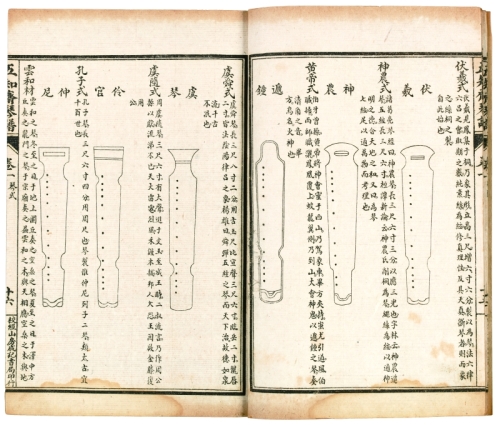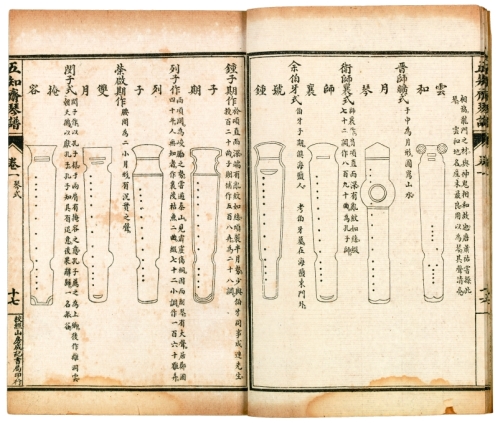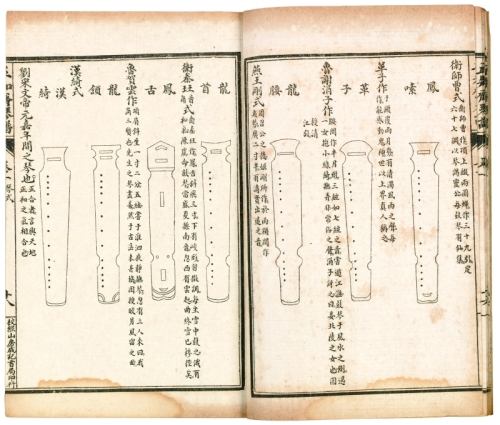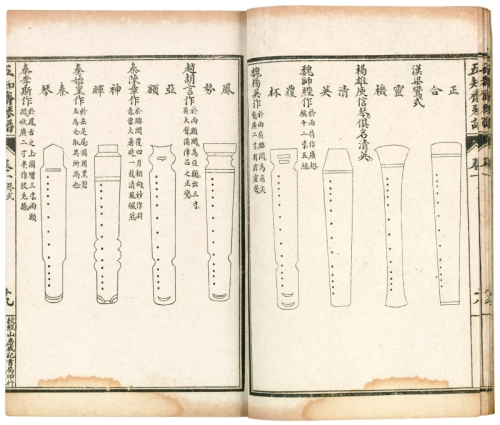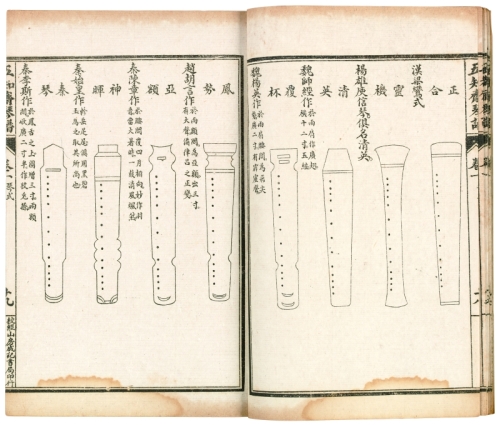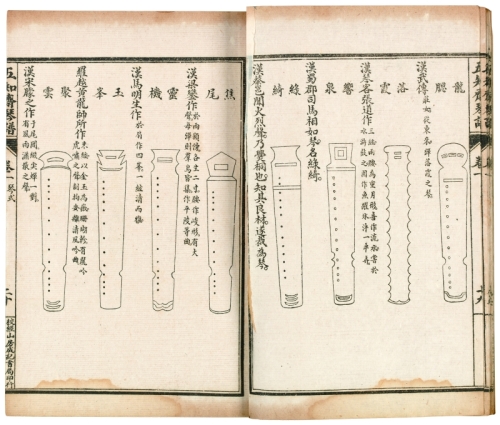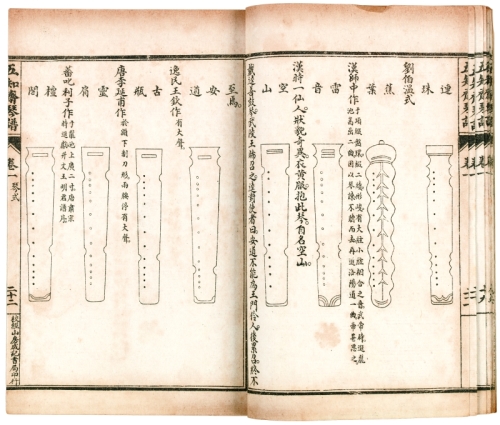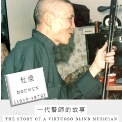Qins come in many styles, with as many as 51 variations recorded in the Wuzhizhai Qinpu (Wuzhizhai Qin Handbook), which was published during the Kangxi reign of the Qing Dynasty (1722). Amongst these styles, Zhongni (Confucius), Fuxi (one of the mythical three sovereigns), Lianzhu (chained pearls), Shennong (one of the mythical three sovereigns), and Jiaoye (plantain leaf) are some of the most common styles. The oldest surviving qin that shares the same structure of present qins dates from the Tang Dynasty. The basic structure of the qin has not changed much since then. Although a few innovative designs appeared during the 1950s and 1960s in mainland China and Hong Kong, none of them have ever become popular.
A total of 51 qin styles were recorded in the lithographic edition of the Wuzhizhai Qinpu printed by Jiaojing Shanfang.


